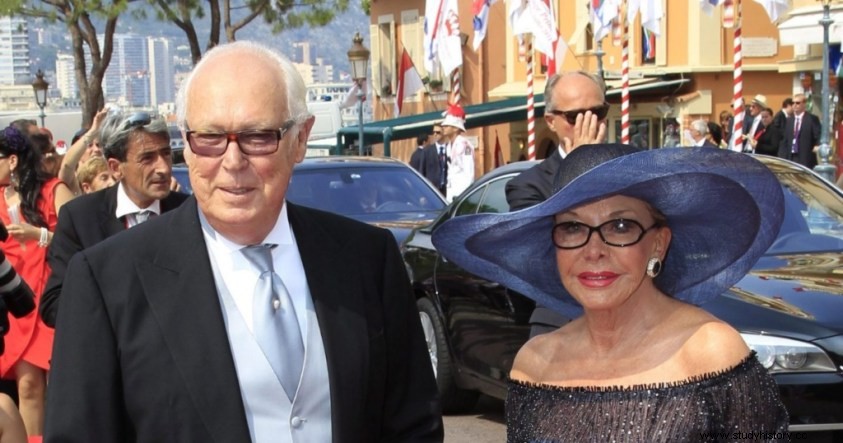
The Savoy family wanted the "crown jewels" kept at the Bank of Italy, claiming that they belong to them.
So let's make a historical discussion about those jewels to understand who they belong to and if there is a basis of legitimacy in the requests made by the former royal family.
I state that the shortest answer to the question "to whom do the crown jewels belong" is that those jewels belong, indeed, they belonged to the crown, not to the ruling family or to those who wore the crown and therefore, their claim is illegitimate.
This assertion starts from law, starts from documents, a document in particular that, in monarchical Italy had enormous importance, namely the Albertine statute , the constitution of the kingdom of Italy .
In the statute there are 2 articles, 19 and 20 which talk about the crown and the treasure of the crown.
For the sake of completeness, I will report them to you, but if you do not trust them by clicking here you will be sent back to the Senate website where there is the full text of the Albertine statute. It's only 9 pages.
Art. 19. - The endowment of the Crown is preserved during the present Kingdom as it will result from the average of the last ten years. The King will continue to have the use of the royal palaces, villas and gardens and dependencies, as well as of all the movable assets belonging to the crown, which will be made an inventory by diligence by a responsible Minister. For the future, the aforementioned endowment will be established for the duration of each Kingdom from the first legislature, after the King's arrival to the Throne.
Art 20. - In addition to the assets that the King currently owns on his own, his private patrimony will also form those that he could later acquire for consideration or free of charge, during his reign. The King can dispose of his private patrimony both by live acts and by testament, without being bound by the rule of civil laws, which limit the amount available. In the remainder, the King's patrimony is subject to the laws that govern his own
As we can see, these articles establish that the crown, as a physical object and with it the crown jewels, are given to the King, who can dispose of them, but their property belongs to the state, which at that time was the kingdom. of Italy.
The Albertine statute specifies that the King is the administrator of the Kingdom but he is not the owner of it, as the Albertine statute is the statute, the constitution, of a modern kingdom and not of an absolute monarchy. In his articles, with all the limitations of the case, however, the sovereignty of the Italian people is recognized, which ceases to be a subject.
The King reigns but does not govern, to use a term popular in the second half of the 19th century.
To put it more simply, the crown represents sovereignty in a monarchy and the Albertine statute establishes that sovereignty belongs to the people and the people, through parliament, "give it" to the King.
This implies a mandatory passage in parliament for the monarchy, a passage that marks the actual birth of the kingdom of Italy with the law 17 of March 1861 whose text reads
Il Re Vittorio Emanuele II assume per sè e pei suoi successori il titolo di Re d’Italia. Ordiniamo che la presente, munita del sigillo dello Stato, sia inserta nella raccolta degli atti dal Governo mandando a chiunque spetti di osservarla e di farla osservare come legge dello Stato. Data a Torino addì 17 marzo 1861.
In the kingdom of Italy, therefore, the crown is given to the King and with it the jewels, but what happens when the monarchy ceases to exist?
During the referendum of 1946, the Italian people were called to exercise their "constitutional" right recognized by the Albertine statute and therefore are called to decide whether to renew the monarchy or take back sovereignty (and with it the crown) and exercise it in a different form , the form of the republic.
We know the outcome of the referendum, the Republic won and the monarchy was dissolved, in this article I will also explain how and why.
The crown then, with the referendum of 46, returned to the people, who then entrusted it, as a temporary endowment (five years) to the parliament, given that it produced a parliamentary republic in which, paraphrasing article 1 of the constitution, sovereignty it belongs to the people who exercise it through the parliament called to legislate.
But returning to the crown jewels, when the Savoy family was deprived of their titles and the King stopped being the bearer of the crown, he also lost the right to use those jewels, whose property, we recall the aforementioned articles 19 and 20 of the Albertine statute, belonged to the "crown" and not to the bearer of the crown, they belonged to the kingdom of Italy.
We therefore conclude our adventure by saying that the crown jewels of the kingdom of Italy belonged and still belong to the Italian state and not to the Savoy family.
